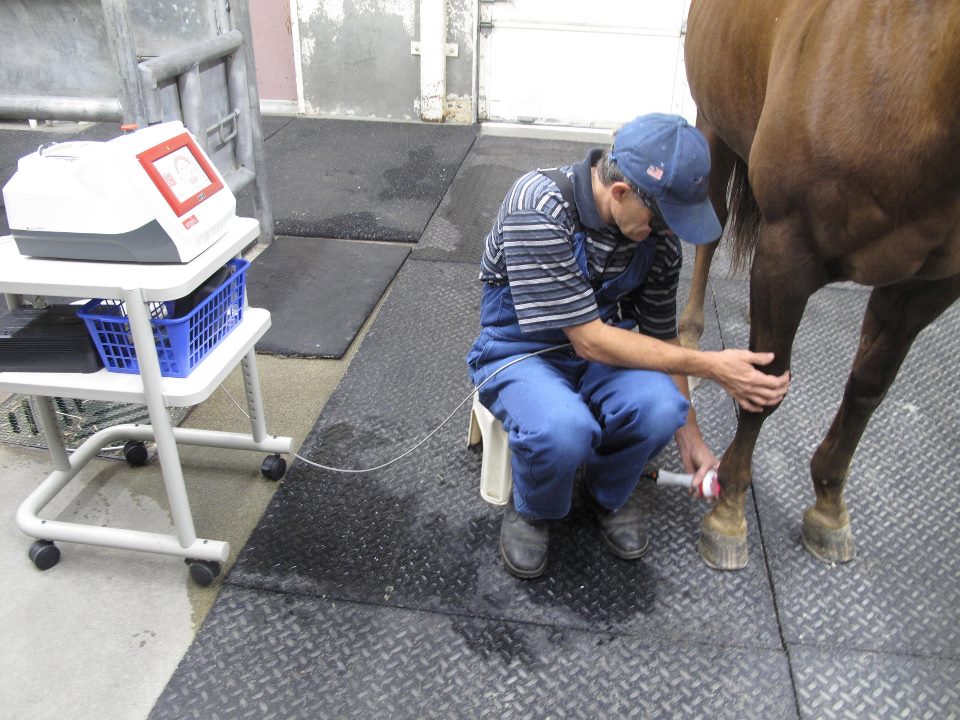The Power of Equine Therapy for Stress And Anxiety, PTSD, and Psychological Healing
The Power of Equine Therapy for Stress And Anxiety, PTSD, and Psychological Healing
Blog Article
Laser Therapy in Horse Treatment: A Modern Method to Improving Steed Wellness
Laser treatment has actually become a crucial method in equine treatment, utilizing focused light power to foster cellular repair work and accelerate healing from a range of disorders. This non-invasive approach is specifically reliable in taking care of musculoskeletal injuries, injuries, and inflammatory problems, substantially improving general steed health and wellness. By boosting mitochondrial task and increasing ATP manufacturing, laser therapy not just enhances flow however likewise supplies considerable discomfort relief. As this ingenious therapy remains to obtain traction, it opens interesting possibilities for addressing chronic problems like joint inflammation and hoof troubles, signaling a transformative shift in vet treatment. What makes this technique especially engaging?
Comprehending Laser Treatment
Laser treatment, a non-invasive therapy modality, has gotten considerable grip in equine medication due to its efficiency in promoting recovery and pain alleviation. Boosted ATP levels quicken cells repair work procedures and minimize inflammation, making laser treatment especially efficient for dealing with bone and joint injuries, injuries, and various other inflammatory problems in steeds.
There are numerous kinds of lasers used in equine therapy, each with particular wavelengths and power outputs customized to various healing demands. Low-level laser treatment (LLLT), also recognized as chilly laser therapy, employs reduced power levels to stimulate cell feature without creating thermal damages. High-intensity laser treatment (HANDLE), on the other hand, uses higher power levels to achieve deeper tissue infiltration and more substantial therapeutic results.
Veterinarians utilize different laser gadgets and techniques depending on the condition being dealt with and the wanted depth of cells penetration. Appropriate training and experience are essential for guaranteeing the secure and efficient application of laser treatment, thus maximizing its healing capacity while decreasing threats.
Benefits for Horse Wellness
With a strong understanding of how laser treatment works, it is essential to explore its many advantages for equine health and wellness. By boosting mobile function, laser therapy advertises faster wound healing and aids in the regrowth of damaged tissues.
Moreover, laser therapy has been shown to enhance flow, thereby boosting blood circulation to affected areas. Improved blood circulation makes certain that necessary nutrients and oxygen are supplied extra efficiently, assisting in the healing procedure. In addition, laser therapy's anti-inflammatory impacts assist in reducing swelling and pain, which is vital for the overall wellness of the steed.
Discomfort management is one more considerable advantage. By releasing endorphins and blocking pain signals, laser treatment supplies effective, non-invasive remedy for both intense and persistent pain. This can add to boosted mobility and lifestyle for the animal.
Last but not least, laser treatment is a non-invasive therapy option, decreasing the risk of difficulties connected with even more invasive treatments. Its flexibility and efficacy make it an important tool in contemporary horse veterinary medicine.
Typical Conditions Dealt With

One more widespread problem treated with laser treatment is arthritis. In addition, laser treatment is employed in the administration of injuries.
Equine breathing conditions, such as persistent respiratory tract blockage (RAO), also react positively to laser treatment. The anti-inflammatory residential or commercial properties of the therapy help in minimizing respiratory tract inflammation, therefore enhancing breathing function. Laser therapy is beneficial in treating unguis troubles, including laminitis and abscesses. By improving flow and minimizing pain, it supports quicker recuperation.
Treatment and Safety And Security
Executing laser treatment in equine therapy involves a thorough procedure to make sure both efficiency and safety. Equine Therapy. The procedure starts with a thorough vet assessment to figure out the viability of laser treatment for the equine's specific condition. When considered appropriate, the treatment location is prepared by cleansing and, if needed, clipping the hair to enhance laser penetration
The specialist must choose the proper type of laser, generally a low-level laser (LLLT) or a high-power laser (HPL), relying on the condition being treated. The laser tool is then adjusted to the proper wavelength, power, and period original site settings. During the application, the practitioner moves the laser over the targeted area in a methodical fashion, guaranteeing consistent and even exposure.
Security procedures are purely stuck to, consisting of using protective eyeglasses for both the specialist and the horse. In addition, it is important to check the equine for any kind of indicators of discomfort or unfavorable reactions throughout the treatment. Post-treatment, the steed is usually provided a duration of remainder to allow the therapeutic results to materialize.

Future of Equine Laser Treatment
As improvements in vet medicine remain to unravel, the future of equine laser therapy holds substantial promise. Arising technologies and much deeper clinical insights are readied to refine and increase the applications of laser treatment for steeds. One of one of the most expected growths is the assimilation of innovative imaging methods that permit much more exact targeting of affected tissues, therefore enhancing healing end results. Furthermore, the development of portable and easy to use laser tools is most likely to make this therapy more available to a broader series of experts and horse proprietors.
Furthermore, ongoing research study right into the molecular and cellular mechanisms of laser treatment will likely generate optimized procedures tailored to specific problems, improving performance and lowering treatment times. Customized treatment plans based upon genetic and biochemical markers could come true, making certain that each horse receives one of the most ideal and efficient care.
In addition, governing innovations and standardization find out here of protocols will improve the trustworthiness and dependability of laser therapy in equine technique. Equine Therapy. As these advancements continue to arise, equine laser treatment is positioned to end up being an indispensable part of vet care, offering enhanced recovery and enhanced high quality of life for horses globally
Conclusion

Report this page